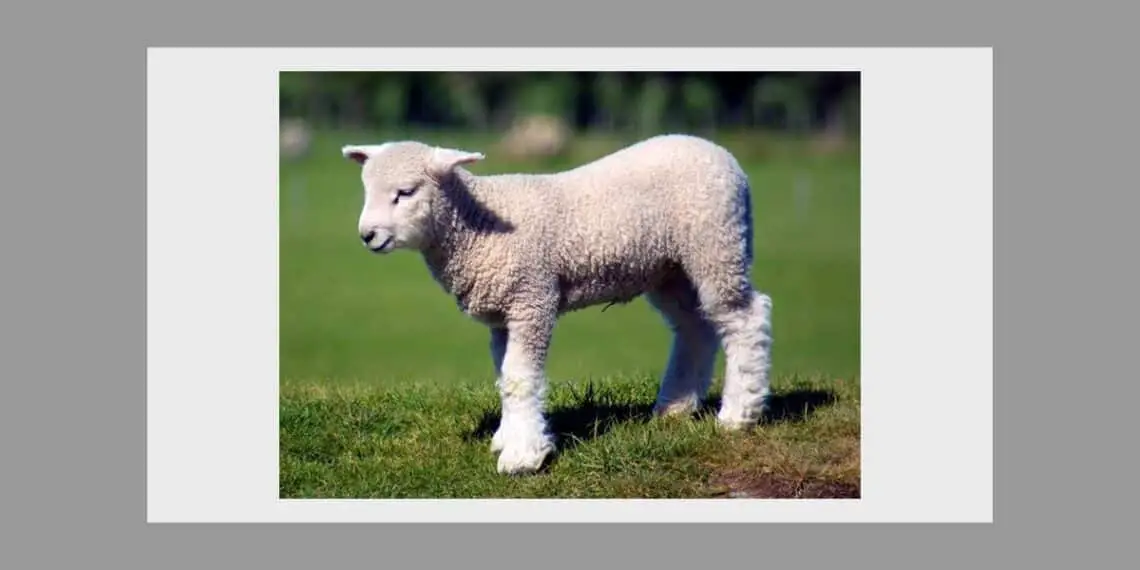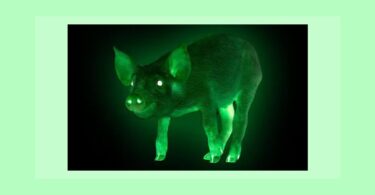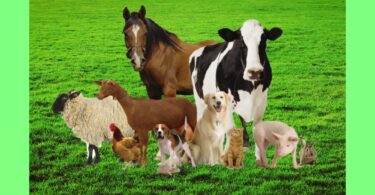End of June 07, I am called out to attend a group of thirty, 1-2 month old lambs: they are not doing well. In reality they are not well at all, as two died in the days prior to the consultation.
The lambs are part of a small flock of about 40 sheep who live on a farm that applies as much as possible, biodynamic agriculture. The process to move to this type of farming started a few years ago and is still ongoing. Parts of this farming technique are well documented but there is still much to learn in this specialty.
Just after lambing, most of the lambs were okay, but now they are going backwards, they are not interested.
A post mortem on one of the lambs shows no pathology that can explain its death. I just notice a few areas of lung consolidation. Worm counts are ok, there is no coccidiosis and feeding is fine. In fact, there are no real reasons why things are not well, but the lambs waste away. A mineral lick was made available, but this made no difference.
The lambs have green discharges from their noses but they don’t cough. The ewes sometimes cough around feeding times. Feeding was increased but this made no difference. They also suffer with Orf virus which causes dry thick crusty eruptions to appear around the mouth and in the ears. The ewes don’t show any lesions. The Orf outbreak is slow and progressive and does not appear to cause many problems.
The flock is a mixture of Wensleydale sheep and Suffolk sheep. The farmer tries to create a mixed breed that is healthy and has good quality wool and meat. He did bear in mind the possible unexpected consequences that this experiment might have.
The farmer’s words:
‘Something stops them from using their food. The problems show in the lambs. The lambs don’t play around much, they are depressed.
My dog is confused about the sheep. They don’t move when he tries to shift them. The lambs don’t listen to him either.
The lambs lag behind the ewes. The ewes care about the lambs, they are good mothers, but the lambs don’t seem to be bothered. The ewes call them to come and drink. They will come and drink a little and then just stand there for a while. At other times the lambs stand there and wait for the mother to come and feed them.
Things are better when the sun shines. The sheep are always better after shearing (the farmer will repeat this many times during the consultation).
The lambs will come and nibble at the food when the ewes call them. They respond to the baa of the mothers. The lambs don’t care about their mothers. They don’t care to follow them unless the ewes call them. There is no connection lamb to mother, there is only a connection mother to lamb. Lambing went well.‘
Based on the observation that there is no connection between lamb and ewe, I gave a dose of Lac Maternum 200.
The farmer will wait 6 weeks before asking me to look at his sheep again (this is indicative for the remedy I used after this consultation, considering that he is a caring farmer). There is no real change but no more mortality occurred. The lambs have grown a little but are still very sluggish.
We talk about his lambs again and he tells me that it appears to go exactly the same as last year and the years before.
The year before (September 06), between looking at two cows, he had asked me to give something for his weaned lambs that were not doing well. I then remembered them: they were standing in a large pen, there was no animosity, their wool was of very poor quality, many were thin and several suffered with mild diarrhoea. They were also very itchy, but there were no skin lesions. A sample had revealed the presence of worms. They had just been weaned, and I was told that none of the lambs really called for their mothers.
On a very basic repertorisation made at the time of: Skin, itch, eruptions without + Mind, play, aversion to play in children + Rectum, complaints of worms + Mind, dullness in children, I had given Sulphur 30 one dose in the drinking water. The response was instant and a few weeks later they were looking very well.
This time (August 07), the farmer reports that there were a few cases of blow fly infestation but that none had been very severely affected. There were still the Orf lesions present (normally one would expect this disease to disappear on its own).
The lambs have big bellies and short legs and look sad as if they want to give up.
Again the farmer tells me how things always get better after shearing.
Because Sulphur was so effective last year and because of the disinterested attitude of the lambs (they don’t seem to care for anything), I decided to give Sulphur again; one dose of 30 in the drinking water.
Again this is followed by a spectacular result. All the lambs catch up with the lack of development and will be the right weight by the end of September.
The whole flock then (September 07) receives one dose of Sulphur XM, with as a result that for the first time in 5 years, there is no need for any veterinary help in the flock throughout the whole year 2007/08.
In my opinion this case is an interesting example of the remedy Sulphur.
There are the aspects of wanting to improve (farming technique, type of breed) but it is not sure whether things are working out. The farmer is in a difficult situation where he wants to improve the small holding he is working on but cannot decide on every aspect of the running of the farm. He takes this with a philosophical attitude and just feels progress is very slow. (Sulph: desire of a higher value but cannot achieve it)
The lambs are generally unaffected: they don’t care about anything: food, mother, their own disease, the dog. It is unusual to have sheep that don’t respond to the dog (poor dog, he nearly needed counseling). There were no signs of the ewes being unwell. This would indicate that the flock overall was very unworried (the lambs certainly were). (Sulph: Cannot be bothered and gives in to the poor situation he/she is in.)







One of the things I would be inclined to try is vitamin D. These lambs may actually be in pain from ricketts. Shearing exposes the skin to sunlight allowing their own production of vitmain D to occur. Then they start to feel better.